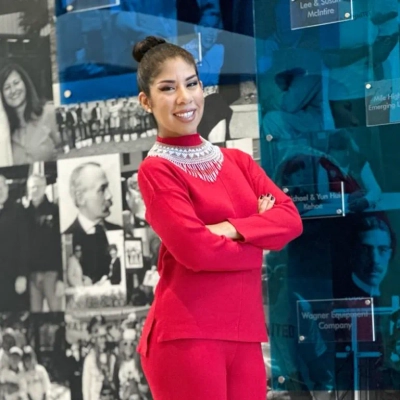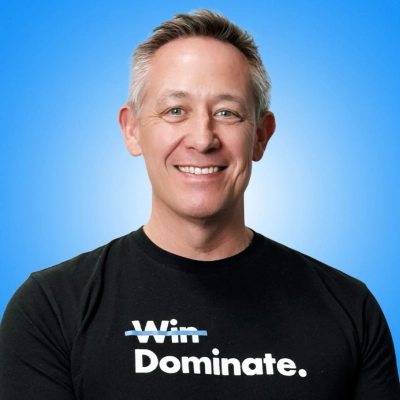The Best Social Media Platforms for Content Marketing Amplification
Content marketing amplification requires more than simply posting on every available platform. This article draws on insights from industry experts to break down which social media channels work best for different content types and business goals. Readers will learn practical strategies for matching format, tone, and distribution tactics to audience behavior and platform-specific engagement patterns.
Evaluate Regional Platform Usage and Content Requirements
When amplifying content marketing efforts through social media, I carefully evaluate regional variations in platform usage to ensure we're meeting our audience where they're most active. For instance, we've found that LinkedIn doesn't have the same penetration in markets like Thailand compared to Western countries, which significantly influences our platform strategy. We also assess the content creation requirements for each platform, recognizing that video-centric platforms like YouTube and TikTok demand different resources than text-focused platforms like Twitter. This strategic approach to platform selection has helped us optimize our content marketing effectiveness across diverse markets.

Target Customers With Shareable User-Generated Content
The rapid growth of social media messaging and tools has opened up meaningful opportunities for our small business to broaden our reach. Our marketing team has developed several designs intended to expand our audience—helping people discover the features of our product, hear how others have experienced those features, and learn about our pricing and customer service. We consistently target platforms where our ideal customers already spend time, so we can naturally amplify awareness of what makes our product unique—especially our book that plays videos and photos. Once that visibility is built, we craft a variety of social-friendly posts—from short user-generated clips showing real-life use, to eye-catching infographics that clarify how we differ from alternatives. What we've found time and again is that the most successful content is easily shareable, and it often comes from customers themselves. When someone posts about how effortless our product is to use—and mentions our outstanding support—that becomes one of the most powerful invitations for a new customer to join our community.

Automate Blog Distribution Across Multiple Networks
Social media is how I broadcast my blog posts and promos. I share them equally on Facebook, LinkedIn, X (formerly Twitter), Reddit, and my Google Business Profile (GBP). Checking my Google Analytics, I get the most visitors from Google organic search, followed by Facebook. Being B2B (business-to-business), I'd expect more people from LinkedIn.
There are two automation tools that I use: Dlvr.it, which sends out from my RSS Feed as soon as a blog post is published. Besides the social networks, it sends it to my GBP, so Google grabs it. Dlvr.it also allows you to schedule posts and repeat the postings. This way, I alternate blog posts with promotional posts.
On my WordPress website, I have the Revive Social plugin, which automatically and randomly shares blog posts to Facebook and X for free. They have an upgraded version that sends old blog posts to other networks.
Additionally, sharing of blog posts to social media creates legitimate backlinks, which help with SEO. Finally, now with AI search bots scraping content from everywhere, your content needs to be EVERYWHERE. Using the automated posting tools saves a lot of time!

Repurpose Long-Form Content Into Platform-Native Formats
We treat social media, especially LinkedIn, as a core content distribution engine rather than just a posting channel. Most of our long-form content gets repurposed into platform-native formats. For example, we turn blog posts into short YouTube videos with NotebookLM and then share them on LinkedIn with compelling screenshots from the video. We also pull insights from webinars, case studies, and reports such as the State of Email and the State of Onboarding to create carousels, posters, and text-based posts that deliver value upfront rather than simply pushing links.
LinkedIn also gives us a real-time feedback loop. The comments and engagement patterns help us see what resonates, so we can refine future articles, videos, and product content. Founder-led growth plays a big role, too. Our founders regularly post product insights, stories, and testimonials, and these often outperform brand channels because they feel more human and credible. Overall, LinkedIn is where our content gets tested, amplified, and redistributed in the most organic way.
Recruit Volunteers With Established Platform Presence
When you are the "marketing person" working as a volunteer for non-profit organizations, social media is your primary strategy. As a retired CMO, I take pride in supporting our nation's veterans. The video content we release to grow our audience, create interest, and generate support is critical. We have found Facebook and YouTube to be the most effective platforms for our targeted audience. Yes, there are additional social platforms, but when you have zero budget and limited time and resources (people to help!), building an audience on every platform is not practical. Success is possible when you recruit like-minded individuals who already have a presence on the platform and give them admin access. In that way, you don't have to play the part of a "one-person band."

Build Micro-Stories Through Collaborative Visual Chapters
We treat social media as the amplifier, not the archive — meaning our content marketing starts with a strong narrative (a campaign, a project, or a story worth telling) and then each platform becomes a lens that reframes that same narrative in its native style.
For Monolith Studio, Instagram has been by far the most effective platform — not just for visibility, but for emotional storytelling. It allows us to blend design, video, and voice into a cohesive identity. Rather than posting static tattoos or behind-the-scenes clips randomly, we build micro-stories: short visual chapters that connect process, emotion, and philosophy. Each one leads viewers deeper into the Monolith world instead of pushing them toward a hard sell.
We also use Instagram Reels and collaborative posts strategically to amplify reach through artists, collectors, and partner brands. Each collab becomes a cross-channel amplification loop — one story told by many voices.
Social media shouldn't repeat your marketing; it should reinterpret it. When each platform feels like a new perspective on the same core story, your brand stops feeling like a broadcaster — and starts feeling like a living culture.

Match Content Format to Audience Engagement Patterns
We strategically use different social media platforms based on content format and audience engagement patterns. Our short-form video content consistently performs better on YouTube compared to Instagram and LinkedIn, making it our most effective platform for video distribution. For long-form written content, we primarily distribute through email marketing while using LinkedIn posts to drive traffic back to the complete articles. This multi-platform approach allows us to maximize reach while playing to the strengths of each channel.

Meet Your Audience Where They Feel Receptive
It completely depends on the brand and where their customers spend their time. For example, Facebook still has the largest user base globally according to some sources, but that doesn't necessarily make it the best platform for every business.
If you're an IT services company targeting CIOs, Facebook might not deliver the best results. In that case, we focus on LinkedIn, where we can reach them in a professional context, speak their language, and target them more precisely. We also use advertorials in online magazines and thought leadership content to strengthen credibility, this approach has worked well for one of our clients.
On the other hand, one of our other clients has a skincare range. While we could technically create a LinkedIn presence, we've found far more success on Instagram and Facebook, platforms where their target audience feels comfortable engaging with lifestyle and product content. It's not that executives don't need skincare, but LinkedIn simply isn't perceived as the right space for that kind of conversation.
Ultimately, it's about understanding your audience's behavior and meeting them where they are most receptive.

Merge Thought Leadership With Lifestyle Storytelling
For me, social media isn't just about visibility; it's about narrative control. I use it to extend the life of my content by repurposing core ideas across platforms in ways that match how people consume information there. For example, a long-form strategy post on FemFounder becomes a carousel on Instagram, a short-form Reels video, and a discussion prompt in our newsletter.
Instagram has been particularly effective because it lets me merge thought leadership with lifestyle storytelling — blending credibility with aspiration. It's where strategy meets emotion —the perfect intersection for building both brand authority and genuine connection.

Adjust Tone and Style for Each Platform
I reuse all of my content. My one long form piece will become ten different pieces of content across different social media platforms. My YouTube video will get broken down into Reels, carousel posts and a possible newsletter blurb. The key here is to adjust the tone and style to fit that specific social media platform and not just copy and paste the exact same information on every single platform. Instagram is looking for saves and engagement from its users whereas TikTok is trying to get users to share and watch your videos. Many have the tendency to use every social media platform in the same way (i.e., as if it were a megaphone) whereas I believe you need to utilize them as different rooms at a convention.
To date, LinkedIn has been the best performing platform for me, mainly because the algorithm is currently rewarding consistent posting of professional insight. In addition to consistently posting; I also make sure to respond to comments on my posts with-in an hour or two of their being posted. This alone has increased visibility by 40% at times. As I stated before; simple things are easy to do but compound over time.

Spark Meaningful Interaction With Strategic Conversation Starters
Many professionals view social media as a digital megaphone, a tool for broadcasting their content to the widest possible audience. This approach often leads to frustration, as they invest time creating valuable articles or videos only to see them met with fleeting likes and minimal real engagement. The fundamental misunderstanding is treating these platforms as distribution channels rather than connection points. The true value isn't in reaching thousands of passive scrollers; it's in sparking meaningful interaction with a handful of the right people.
My strategy, therefore, is to treat every piece of content not as a final statement, but as a conversation starter. The goal isn't simply to get a post seen, but to use it as a catalyst for deeper, often one-on-one, dialogue. For this, LinkedIn has proven uniquely effective. Its professional context encourages more substantive exchanges than other platforms. I don't focus on vanity metrics like views or shares. Instead, I measure success by the number of thoughtful comments that lead to direct messages, or the DMs I receive from people who saw a post but preferred to respond privately.
I remember sharing an article on the challenges of mid-career pivots. A director at a tech firm, someone I didn't know, left a thoughtful comment about his own quiet struggle with this issue. I replied to his comment publicly, then followed up with a direct message to thank him for his vulnerability and share a related resource. That brief exchange led to a longer conversation about his team's morale and, eventually, a consulting engagement. The public post was merely the key that unlocked a private door. The aim isn't just to be heard, but to create a space where others feel comfortable enough to speak.
Leverage AI Recognition for Lasting Digital Presence
I used to treat social media like a portfolio, a place to publish campaign work and hope the right people noticed. Now it serves a very different purpose. Because my content is being picked up by AI systems, social platforms have become less about followers and more about amplification and recognition. When I post today, it doesn't just travel through the feed, it moves through the digital ecosystem, often reaching further than human engagement alone ever could.
Even from accounts that aren't algorithm favored, my work is now referenced across major AI models in near real time, which shows me that the reach of social content is bigger than the platforms themselves. If I had to choose, LinkedIn and Instagram have been the strongest amplifiers, not because of likes, but because they connect people, identity, and conversation in a way that lasts. For me, social media isn't just about growing an audience anymore, it's about building lasting digital presence.

Test Headlines Before You Invest Ad Spend
LinkedIn drives around 60% of my overall content reach because posts there stay alive much longer than on any other channel. Some still get impressions a week later without any spend. It's where I test headlines, hooks, and formats before turning them into full campaigns. The engagement data shows early what topics connect, so I can double down before putting ad spend behind it.
I post short videos and carousels that share real insights from SEO and Google Ads work. I like breaking down small wins or failed tests because that gets the best traction. When people see numbers and results instead of vague advice, they share it. Once those posts start gaining reach, I retarget the same audience through Google Display and bring them back to longer pieces on the site. That mix between organic and paid keeps things running in a loop.
Instagram and X help with visibility but not depth. On LinkedIn, people scroll with intent and look for practical value. Engagement there comes from real conversation, not vanity metrics, so the leads stay warmer. That later helps drop CPC when I build campaigns around those same users.
LinkedIn isn't just for reach because it feeds straight back into strategy. Each post is a small test that shapes the next one. It stays consistent, transparent, and easy to measure in both growth and conversions.

Provide Raw Proof of Operational Transparency
We use social media to amplify our content marketing by treating each platform not as a broadcast channel, but as a specific trust verification tool. We don't push the same content everywhere. We use social media to provide raw, unpolished proof that the operational claims we make on our blog and website are actually true.
The platform that has been particularly effective for Co-Wear is YouTube. It's the only platform where we can consistently prove our competence without a filter. We post videos of our internal quality control checks, our fabric testing processes, and the actual complexities of our supply chain. We show the audience the mistakes and the fixes, which builds trust faster than any polished advertisement ever could.
This strategy works because it eliminates the consumer's anxiety that an e-commerce brand is hiding something. It transforms content from marketing fluff into operational transparency. By showing the messy reality of the business, we earn genuine engagement and trust, proving that competence—not just creative editing—is the highest form of content marketing.

Translate Long-Form Content Into Insight-Based Micro-Posts
Social media is not merely a channel of distribution; it is the feedback engine of content marketing. At DesignRush, we use social media to test our headlines, angles, and visuals before we scale content out through our owned and earned media. The objective is not reach, but resonance; finding what truly creates engagement and dialogue.
The most productive platform for us has been through LinkedIn. The algorithm favors expertise over entertainment, making it the most conducive for thought leadership and B2B storytelling. Our strategy is to take long-form content and translate it into insights-based micro-posts. Case studies or data reports and morph them into easily digestible insights, that will build credibility and funnel traffic back to our site. Authenticity, consistency, and continuity are far more powerful than paid amplification.

Embed Video Content Within Written Materials
In my experience, social media serves as a distribution channel that compliments and extends the reach of our core content marketing assets. Rather than treating social platforms as standalone efforts, I view them as an extension that build on content we produce.
YouTube has been particularly effective for us because it allows us to create video content that directly complements our written materials.
When we publish blog articles or update service pages, we can produce corresponding videos that give visitors a visual understanding of complex topics. This multimodal approach caters to different learning preferences and keeps people engaged longer.
What makes YouTube especially valuable is its dual nature as both a social platform and a search engine. The videos we create don't just live on YouTube; we embed them into our blog posts and service pages, creating a richer user experience.
Short explainer videos or even brief 60 second commercials work particularly well because they break down complicated subjects into digestible visual formats that text alone can't achieve.
The key is integration. We don't create YouTube content in isolation. Every video is strategically designed to support existing written content, answer common customer questions, or demonstrate concepts that benefit from visual explanation.
This creates a content ecosystem where each piece reinforces the others, ultimately driving more qualified traffic and engagement across all our marketing channels.

Squeeze Ground-Level Moments Into Fifteen-Second Formats
At the Ready Nation Contractors, the social media will serve well when it is considered as a continuation of what is going on at the ground. I do not attempt to recreate the message to each platform since such a refinishment is what creates work not theatre. I grab anything that is doing well on our site or in our house conversations and squeeze it into a format that can be read in less than fifteen seconds. An example of a fast cut of a crew removing rotten decking. A checklist is displayed on the screen regarding what to do after a windstorm. An instance of a project manager giving reasons as to why a leak is reported three days after. Such little cuts have a greater reach than the entire marketing materials since they look used. They demonstrate the disorder, the noise, the shaking of the ladder, etc. That is what people do not scroll past.
TikTok surprised me the most. I had not imagined that homeowners would be concerned with roofing there but they are. Perhaps it is rhythm of the work. Perhaps it is the pre-post compensation. Perhaps, it is the interest to know what happens on the head. Short videos are an effective way to attract attention and promote returning to our long guides due to the desire of the audience to learn more information following the induction of a spark of understanding. The mix works. Social gives the flash. The website gives the depth. And somewhere in the middle, people have known that we actually know what we are talking about and that is the entire point of amplification of content in the first place.

Hand-Post Native Moments That Invite Quick Replies
I'm Justin Brown, co-creator of The Vessel, a purpose-driven personal development platform. I lead our marketing and content ops.
The way we use social to amplify content is simple: publish one tight hub page each week, then turn that page into a native Facebook moment that stands on its own. I post as a person, not a logo, with a 50-word opener in our readers' language, one proof (screenshot or short story) and a single question that invites a quick reply. For the first 30 minutes I'm in the comments editing headlines, clarifying next steps, and saving the best phrasing to fold back into the page.
Facebook has been the most effective for us because our audience actually talks there, and the algorithm still rewards real conversation over sterile brand posts. Scheduling tools like Strevio helped us stay consistent, but we saw them lose punch: link-heavy, pre-scheduled posts without early comment velocity just don't travel. Hand-posting, staying live for the first window, and using Groups plus my personal profile outperform any calendar. We keep links low-friction (one hub link in the first comment), clip threads into short carousels, and tag those URLs with UTMs so we can see hub conversions tied to specific posts.
It feels like service, not promotion and the landing experience matches the thread they just learned from, so clicks turn into sign-ups.
Thank you for considering my pitch!
Cheers,
Justin Brown
Co-founder, thevessel.io

Tailor Each Piece to Platform Tone
I use social media as a strategic amplifier rather than just a distribution channel for content marketing. Each piece of content is tailored to fit the platform's native tone and audience behavior — for instance, thought leadership articles go on LinkedIn, while short, value-driven snippets or behind-the-scenes clips perform best on Instagram. What really drives results is repurposing: turning a blog post into a carousel, a video summary, or a discussion thread to reach audiences in multiple formats.
LinkedIn has been particularly effective for me because it blends professional credibility with authentic storytelling. By sharing insights, tagging collaborators, and engaging in relevant industry conversations, I've seen organic reach and lead quality improve significantly. The key is consistency — showing up with value, not just visibility.

Transform One Piece Into Many Small Shares
For a long time, I just shared links to my blog on social media. It didn't work well. I learned that you can't just shout about your content. You have to be smart about it.
Here's my simple plan:
Before You Share: Get People Interested.
A few days before you post your article or video, start talking about the topic.
Ask a question like, "What's the hardest part about [topic]?" This gets people curious.
When You Share: Don't Just Post a Link.
Turn one big piece of content into many small pieces.
Example: From one blog post, you can make:
A cool quote for Instagram.
A short video for TikTok or Reels with the main tip.
A quick list of points on Twitter.
A simple guide with pictures on LinkedIn or Facebook.
This way, you reach different people on different apps.
After You Share: Keep the Conversation Going.
Reply to every comment. Thank people and answer their questions.
A few months later, you can share the same content again with a new picture or a new question. Good content can be shared more than once!
The One Social Media Platform That Works Best for Me
For my business, that platform is LinkedIn.
Why LinkedIn is great:
People are there to work. They are already thinking about their jobs and are open to learning new things.
It's easy to be seen. You don't always need to pay for ads. If you post helpful stuff, lots of people will see it for free.
The comments are smart. People have real conversations that can lead to new customers.
What I do on LinkedIn:
I don't just post a link. I write the most helpful part of my article right in the post. Then I say, "If you want to read the full story, click here."
I talk to other people. I comment on their posts with useful thoughts. This helps them notice me.
The result? Most of our good customers find us through LinkedIn. It's the best place for us to share our content.
In short: Use social media to start conversations, not just to share links. And if you have a business, try LinkedIn—it really works.

Focus on Humanity Instead of Automation
Social media is flooded with low-effort and often AI-generated content, so the most effective thing I've done is to focus on being different and human instead of generic and automated. That's the only real way to cut through the algorithm noise. Have a strong point of view, something interesting to say, and a unique voice.
Video is also a huge element of this, and I attribute a lot of my revenue to having been pretty consistent about posting long-form content as well as shorts. YouTube and LinkedIn have been good for me, but Instagram and TikTok are certainly viable platforms as well, depending on what you're selling.
Everyone assumes written content is AI generated now, so taking the time to show your humanity on video really does make a significant difference in the impact of your content marketing efforts.

Collaborate With Venues for Natural Discovery Pathways
I've transformed my business by strategically using social media to amplify my content marketing. As a wedding DJ and musician, Instagram has been exceptionally effective for me, completely filling my booking calendar with ideal clients within just two years.
Previously, I relied primarily on my website, which attracted a wide range of inquiries without any filtering for compatibility - both financially and personally. By shifting focus to Instagram and consistently posting content from weddings I've performed at, my profile has become a comprehensive portfolio that showcases not just my work but also my personality and style.
My Instagram success hinges on three key approaches:
First, location marketing. I create short videos of my performances at wedding venues, then collaborate with these venues on posts that appear on their profiles. Since couples typically search for venues first, this creates a natural discovery pathway to my services.
Second, SEO optimization. Understanding that Instagram functions as a search engine, I've strategically included "DJ from Heidelberg" in my profile name, making me discoverable when couples search "DJ Heidelberg" within the platform.
Finally, Meta Ads have been crucial. Using Meta Business Suite rather than Instagram's internal ad system allows for precise targeting. I specifically target newly-engaged women aged 25-35 in selected cities, ensuring my content reaches couples at the perfect planning stage.
My first several posts typically convert well, while regular Stories add the personal touch that helps potential clients determine if we're a good match. This approach has generated inquiries from people who align well with both my personality and offerings.
This strategy works across industries - initial investment of time and effort creates a self-sustaining system that delivers qualified leads directly to your business.

Engage in Meaningful Conversations Within Niche Communities
At Timeless London, we've found Reddit to be an unexpectedly powerful space for amplifying our content marketing, especially within communities that value authenticity and conscious fashion. Instead of using it for direct promotion, we engage in meaningful conversations across subreddits like r/SustainableFashion, r/Femalefashionadvice, and r/VintageFashion. We share insights from our blog posts, answer questions about ethical production, and offer honest advice on fabric care and styling. The focus is always on adding value, not selling.
What makes Reddit particularly effective is the depth of dialogue. People on Reddit want transparency, they appreciate when brands show up as humans first. By participating thoughtfully and sharing our journey rather than just our products, we've built genuine trust and visibility among audiences who truly care about what we stand for. It's slower growth than traditional social media, but the connections are deeper and far more lasting.

Post Updates to Send Freshness Signals
One of the most overlooked social platforms for amplifying content is Google Business Profile. Instead of treating it like a directory, we post updates, offers, and authority-building content several times a week. Those posts send strong freshness and relevance signals to Google, which helps our clients rank higher in Maps and stay top-of-mind in local search, even before traditional social platforms kick in.

Turn Bite-Sized Videos Into Mini-Masterclasses
For me, TikTok has been a real game-changer; not because of trends or memes, but because it has tremendous benefit as an education platform for virtually any subject - mine just happens to be marketing.
Most SMBs fail to stand out because they sound just like their competitors. TikTok gives me a stage to fix that - globally. I use it to break down what great marketing actually looks like - the structure, the psychology, and the storytelling behind brands that win - and to call out the mistakes that keep small businesses invisible.
By turning bite-sized videos into mini-masterclasses on differentiation and brand strategy, I've built an audience of more than 165,000 followers and attracted over 100 new clients in just two years. Additionally, it has introduced our agency to businesses around the world - providing us access to clients we never would have found before. The best part, they call us because we've already proven our value. This makes the sales process faster and easier for all involved.
The takeaway for SMBs? You don't need a big budget, you need a bold point of view and the discipline to show up with a consistent story across all your messaging - sales and marketing. TikTok isn't just entertainment anymore. It's where the best brands and thought leaders win the attention war.




